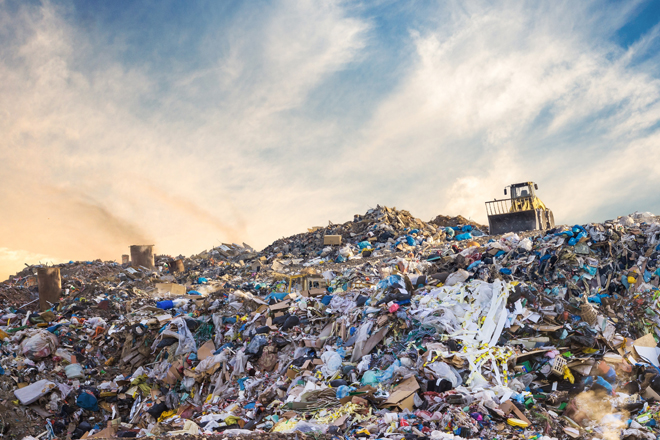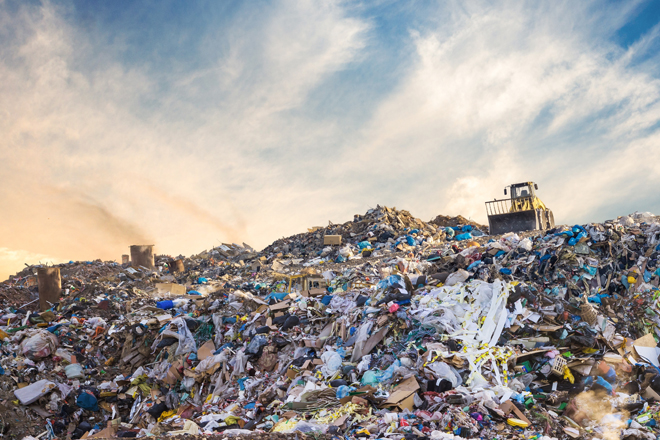拆解塑膠污染

Hamish Chamberlayne, Head of SRI, explains how the responsible use of plastics is an important consideration for evaluating the sustainability of a business.
The severity of the impact of plastic pollution continues to grow, with the time horizon for consequent irreparable damage drawing ever closer. The responsible use of plastics is an important consideration for evaluating the sustainability of a business and thus increasingly relevant to investors’ long-term decision making.
The cumulative mass of all virgin plastic ever created reached 8.3 billion tons in 2015, with estimates that 6.3 billion tonnes of this plastic ended life as waste. Almost 80% of this waste still remains in landfill or as pollution in the natural environment, with approximately 9% and 12% having been recycled and incinerated respectively. Currently, around 400 million tons of plastic are being produced each year, increasing at a compound annual growth rate of approximately 8% since 1950. Accounting for around 40% of all nonfiber plastics, plastic packaging represents a significant contributor to the problem [1]. Consider that less than half of the one million plastic bottles sold every minute globally are being recycled [2,3,4] with the most commonly polluting polymers taking over 500 years to decompose, the issue of plastic waste is proving far from short-term [5].
A year of regulatory responses and consumer-driven trends
In January 2018, coinciding with a rapid growth in media focus on ocean plastics, Chinese regulation banning imports of any paper or plastic waste came into effect. As China was the destination for approximately 50% of global paper and plastic waste, this legislation has had a major impact on governments, businesses and consumers [6] [7]. This galvanised an increase in debate on plastic waste, forcing other countries to deal with the issue. Countries around the EU set a precedent for plastic-limiting legislation, with bans on plastic microbeads and cotton buds announced in the UK and Scotland in January 2018, and a French ban on plastic cutlery from 2020 [8] [9].
The European Parliament has provided further momentum by voting in favour of a ban on 10 types of single use plastic, covering 70% of marine litter items found on EU beaches [10]. Furthermore, the new EU regulation goes beyond banning products alone to holding manufacturers to account for their impact, embodying the ‘polluter pays’ principle central to European environmental policy. Additional reduction targets, taxes and tariffs aimed to ensure manufacturer responsibility are embedded into the legislation. As a result, manufacturers may be required to provide 80-100% of the funds required for clean-up and waste avoidance attributable to their products [11]. The extent of the impact of regulation can be evidenced by the introduction of a 5p charge for plastic carrier bags in the UK which quickly led to an 85% reduction in their usage [12]. Trends in prescriptive legislation are not limited to China and the EU; over 15 African countries have banned the use of plastic bags entirely [13].
While bans and restrictions on plastics are focussed on products seen as unnecessary (e.g. microbeads, cotton buds and disposable cutlery), and consumer preferences are shifting away from a wider range of products considered to have a large ‘plastic footprint’, the risks from the irresponsible use of plastic therefore also impact companies operating in less heavily regulated areas.
A balancing act
Identifying the primary sources of environmental impact and the most relevant investment risks and opportunities is a complex and ongoing process. Investment risks stemming from changes in regulation and consumer preference will not always align with the greatest sources of environmental damage from plastic pollution. The current regulatory trend, for example, is to focus on the restriction of plastic use that is deemed unnecessary, such as in straws or coffee stirrers, while significant pollution sources such as plastic microfibers in clothing remain unregulated. The full sustainability impact of plastic usage is a result of many interconnected – and often unclear – factors. For instance, food packaging has been targeted by consumer groups and regulators despite evidence that the packaging helps to deliver food safely, increase shelf life and reduce food waste. Similarly, the delivery of medicines, clean water, and sterilised products relies on plastic, as do numerous resource efficiency improvements and resource efficiency improvements across transport and logistics industries.
Responsible use is likely to have a much greater positive impact than the avoidance of all forms of plastic entirely; the challenge lies in assessing the balance between the benefits of using the material and the costs of designing it out entirely. Encouraging responsible use often requires assessment of an entire supply chain, taking into account factors such as resource efficiency, product longevity and the use of circular economy initiatives. Although the regulatory and public focus on single use plastics and packaging is justified, with the most common polluting polymers being those used in bottles and bags, tackling the wider problem requires a balanced approach.
Beyond packaging
Approximately 34% of plastic resin ends life as packaging, leaving the rest to be used in other applications, including construction, transportation, electronics, consumer products, textiles and furniture. Plastic waste from non-packaging applications is also thought to be more likely to end up as ocean microplastic due to drains and sewers acting as ‘pollution vectors’. It has been estimated that 42 million tonnes of polyester, polyamide and acrylic (PP&A) pollution was in existence in 2015 as a result of use in textile fibres, making clothing a significant contributor to ocean waste [1].
Just as microfibers are being transported into the ocean by washing clothing made from PP&A, dust and debris, most notably from car tyres, is arriving from urban environments via drains and rivers. It has been estimated that 63% of primary source ocean microplastics originate from synthetic textiles and car tyres [14]. The encouragement of the responsible use of plastics must therefore span industries, as well as supply chains. The relevance of plastic use to investments varies greatly with company and industry, meaning that there is not yet one single solution or identifier for positive impact, investment risks or sustainability and investment opportunities.

Indicators of responsible use
Leading companies are likely to maximise opportunity by collaborating across industries, working within the public and private sectors. Indicators to look for in leading companies can be broken down into three broad areas:
1. Transparency and accountability
The level of voluntary disclosure by companies can be used as an indicator of potential resilience to consumer groups shifting their appetite away from plastic-heavy purchases. Proactive disclosure and target setting may also lower the risk of being subject to top down, prohibitive legislation. In best practice cases these targets are highly visible and embedded in company values. Integrated reporting with clear relevance to the impact, product or operations of the company should be taken with greater weight than the isolated publication of statistics.
2. Materials use – recycled content and the circular economy
Targeting an increase in the percentage of recycled content used by companies may be a greater driver for change than encouraging the production of recyclable items, potentially impacting practices further along supply chains by growing demand for recycled material. Although currently not universally possible, companies carrying out early research in materials’ use are likely to benefit. Types of plastic used will begin to narrow as recycling infrastructure develops, creating opportunities for leaders in the area. Until the supply of recycled polymers has both increased and stabilised, however, overambitious companies may be likely to miss targets on the use of recycled content due to the availability of recycled material.
Policies that either integrate circular economy thinking into operations or encourage the designing out of the material altogether, indicate long-term thinking in this area. The early integration of circular economy models, such as take-back initiatives, reverse logistics and modular design has the potential for significant benefit through increased efficiency, industry recognition and first-mover advantage.
3. Collaboration
Opportunities exist owing to future increased demand for recycling facilities, new logistics solutions for circular economy or deposit-return initiatives, and new materials that will be required to replace single use plastics. As many of these developments span several industries, companies creating or joining collaborative initiatives are likely to excel, particularly those working vertically along value chains and investing in recyclable technology and infrastructure.
Those working with policymakers to influence consumer behaviour are likely to benefit from positive public image and potential government support, with programmes around improving recovery rates having the co-benefit of increasing the availability of recycled material.
A ‘win-win’ for companies and their investors
In 2018, we began to engage with a US food company, focusing on their packaging and supply chain, and were impressed by the large amount of detail the management provided on their social and environmental outreach initiatives, both current and in the pipeline. Specifically on the plastics and packaging concerns we raised, we learned that the company had reduced the carbon impact associated with its packaging and committed to developing an approach that would take into account the circular economy and reduce plastic waste reaching the ocean. Soon afterwards, the company made a further commitment that 100% of the company’s plastic packaging will be reusable, recyclable or able to be repurposed by 2025.
As investors, our discussions satisfied us that sustainability issues are a priority for the company, with the pricing and reputational benefits inherent in their approach likely to prove advantageous both to the company’s bottom line and to our investors. More importantly, we were also reassured that there is a genuinely long-term mindset in place at the board level, which is precisely where, as socially responsible investors, we expect accountability to lie.
References
[1] R. Geyer, J. R. Jambeck and K. L. Law, “Production, use, and fate of all plastics ever made” Science Advances, vol. 3, no. 7, 1 7 2017.[2] United States Environmental Protection Agency, “Facts and Figures about Materials, Waste and Recycling”.
Available: https://www.epa.gov/facts-and-figures-about-materials-waste-and-recycling/containers-and-packaging-product-specific-data#PlasticC&P.
[3] Environmental Audit Committee, UK Parliament, “Plastic bottles: Turning Back the Plastic Tide” 2017.
[4] Sandra Laville and Matthew Taylor, The Guardian, “A million bottles a minute: world’s plastic binge ‘as dangerous as climate change’”.
Available: https://www.theguardian.com/environment/2017/jun/28/a-million-a-minute-worlds-plastic-bottle-binge-as-dangerous-as-climate-change.
[5] D. K. A. Barnes, F. Galgani, R. C. Thompson and M. Barlaz, “Accumulation and fragmentation of plastic debris in global environments” Philosophical Transactions of the Royal Society B: Biological Sciences, vol. 364, no. 1526, p. 1985, 27 7 2009.
[6] UN Environment, “China’s trash ban lifts lid on global recycling woes but also offers opportunity”.
Available: https://www.unenvironment.org/news-and-stories/story/chinas-trash-ban-lifts-lid-global-recycling-woes-also-offers-opportunity.
[7] Alice Ross, Uneartherd, “China’s plastic scrap ban threatens ‘crisis’ for UK recycling industry”. Available: https://unearthed.greenpeace.org/2017/12/07/china-plastic-scrap-ban-crisis-uk-recycling/.
[8] Kevin Keane, BBC News, “Scotland ban announced for plastic cotton buds”.
Available: https://www.bbc.co.uk/news/uk-scotland-42640680.
[9] James McAuley, The Independent, “France becomes the first country to ban plastic plates and cutlery”.
Available: https://www.independent.co.uk/news/world/europe/france-becomes-the-first-country-to-ban-plastic-plates-and-cutlery-a7316816.html.
[10] EU Commission, “Single-use plastics”.
Available: https://ec.europa.eu/commission/news/single-use-plastics-2018-may-28_en.
[11] EU Commission, “Implementation of the Circular Economy Action Plan”.
Available: http://ec.europa.eu/environment/circular-economy/index_en.htm.
[12] Rebecca Smithers, The Guardian, “England’s plastic bag usage drops 85% since 5p charge introduced”.
Available: https://www.theguardian.com/environment/2016/jul/30/england-plastic-bag-usage-drops-85-per-cent-since-5p-charged-introduced.
[13] UN Regional Informantion Centre for Western Europe, “Africa leads the way on plastic”.
Available: https://www.unric.org/en/latest-un-buzz/30578-africa-leads-the-way-on-plastic.
[14] J. Boucher and D. Friot, ICUN, “Primary microplastics in the oceans: A global evaluation of sources,” 2017.
